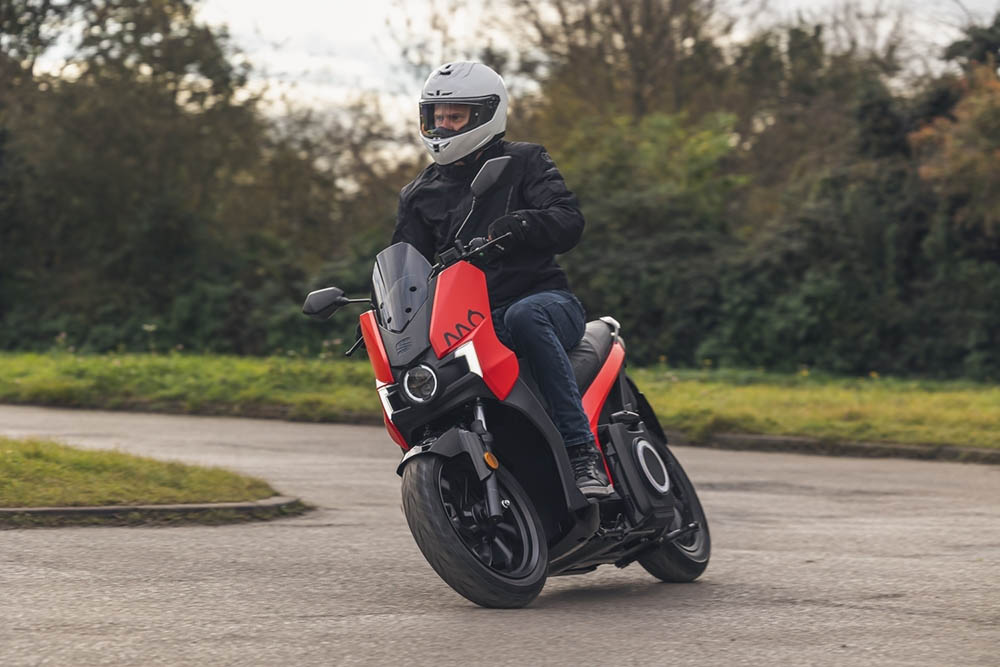Urban mobility is one of the many new phrases to enter the vernacular in recent years, and automotive manufacturers new and old have been rushing to provide new solutions to meet the challenge.
One of the latest entrants comes from Spanish car manufacturer SEAT, part of the Volkswagen Group, who have come along with a 125cc equivalent electric scooter. Called the MÓ 125, it’s not actually made by SEAT but rather some near neighbours – a Barcelona based company called Silence.
The MÓ is actually a rebadged version of the Silence S01 and is sold out of 24 SEAT car dealers here in the UK. On the surface it looks like a smart move from both companies. For SEAT, it gives them an over-the-counter product built in their home city, while Silence benefit from the trust and reputation of working with big brand and their retail network. At £5800 on the road (after a £500 government grant) it’s a good chunk more expensive than petrol powered 125cc scooters.
The scooter itself is pretty well proven. Silence have been around for over a decade now and there’s some interesting stuff going on with the MÓ/S01.
At first glance it’s all quite conventional, and rather low spec in some ways. The minimalist front end looks a bit more moped than six grand scooter from a distance, but up close it has a bit more presence to it. The 15” front wheel (with 14” rear) is larger than you’d typically find on a 125cc scoot and these are shod with good quality Pirelli Angel tyres although, by contrast, the front forks and brake calipers still look a bit weedy.
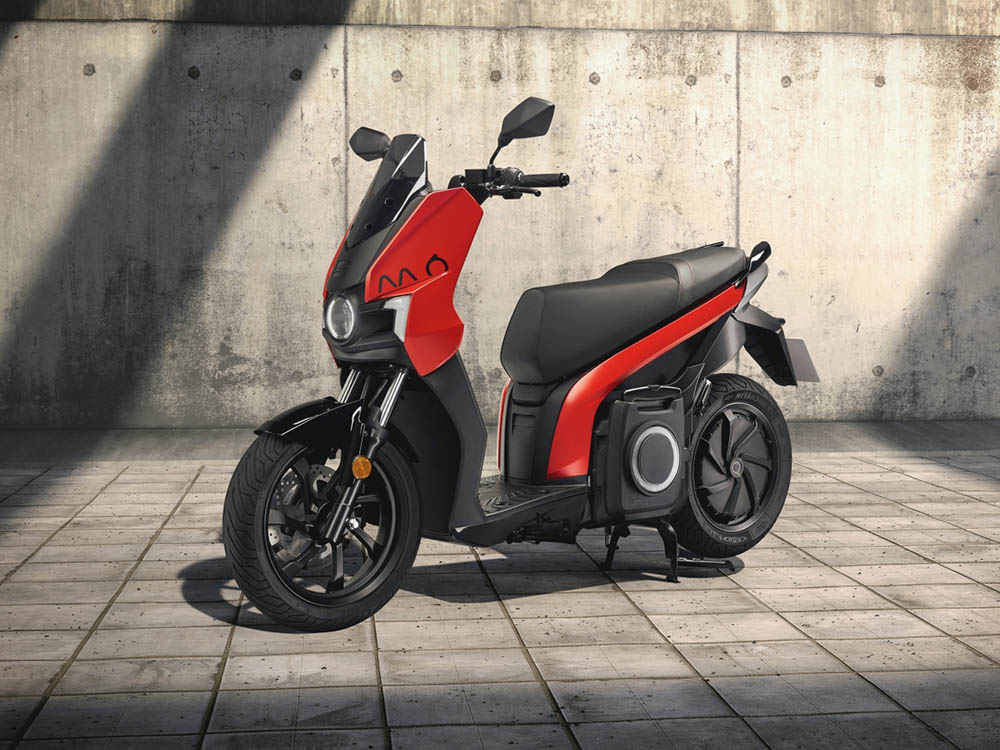
Sit astride the SEAT’s, erm, saddle, and it feels well proportioned, a bit more like a mid-range 125 than a basic moped. The seat is a little firmer than I would like, but the riding position is comfortable. The LCD dashboard tells you everything you need to know, although I’d have liked the speed readout to be more prominent. I also found the asymmetric design a little odd, playing with my OCD and making me question if the handlebars were actually straight. There’s also an app to connect your smartphone, which allows you to check the battery level and so on, but it’s probably at its most effective when used as a tracker and anti-theft alarm. If you do like to use a phone as a sat-nav while riding, the MÓ has a USB charging point located conveniently below the handlebars, although there’s no glovebox in which to keep your phone, or a bottle of water.
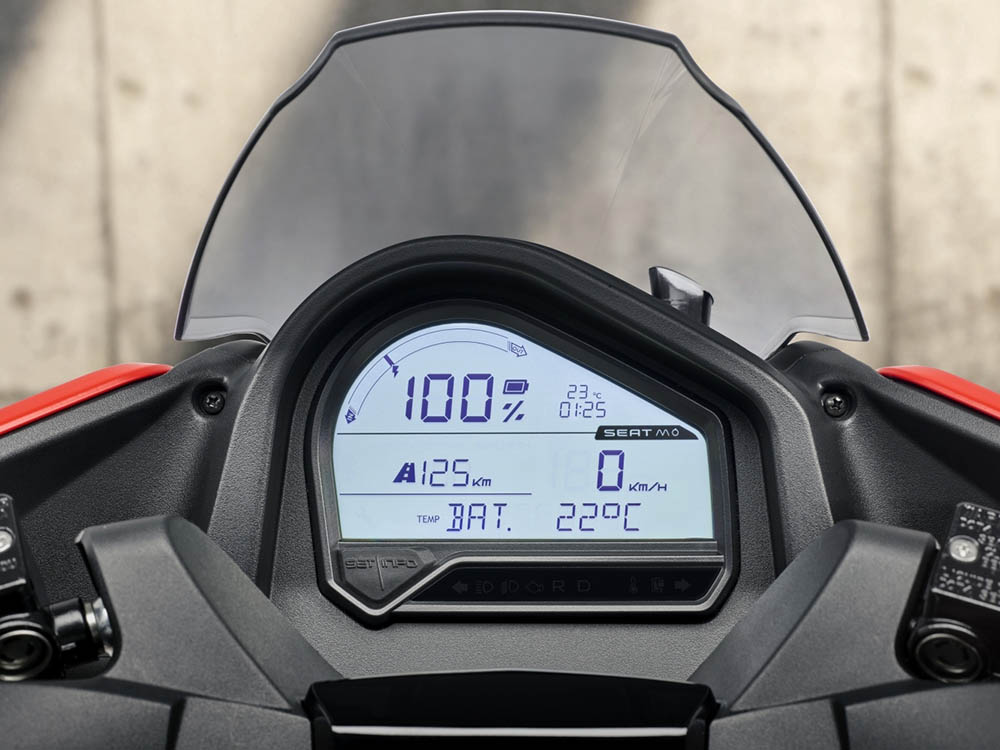
I find it interesting that SEAT has added ‘125’ to the MÓ’s name. Being electric, it has no engine as such, but with the rear wheel mounted motor rated at 9kw, it’s learner legal and can be ridden after doing the day’s CBT training. Adding the ‘125’ certainly helps position it in the marketplace, even if there is no actual engine. It’s got three power modes: default is ‘City’ which gives a 50mph top speed, ‘Eco’ further caps power and has a top speed of 40mph. For those looking to go on dual carriageways, ‘Sport’ unleashes maximum power and a top speed of 60mph.The real beauty of electric propulsion is the instantaneous acceleration and, even for city riding, Sport was my go-to setting. As well as the top speed benefit, it also makes the MÓ sharper away from the lights, where ‘City’ feels a little laggy. The peak torque is quoted as 240Nm, more than the massive 2.5-litre Triumph Rocket 3 motorcycle and, with a 0-30 time of less than four seconds in Sport, the SEAT is very nippy in traffic – its natural habitat.
On the open road it feels a little more exposed. Those big wheels give great stability but the suspension feels basic and it has a tendency to clatter over bumps. The 62mph indicated top speed means you won’t find yourself being overtaken by trucks, but equally it does feel like it is hitting a limiter. Where 125s struggle and shed speed up hills, the SEAT holds its maximum speed even on inclines. Conversely, downhill the motor cuts out when the dial as much as nudges 63 – a bit like a parent pulling back the reins on a wandering toddler. I find that a bit disappointing. Best selling petrol scoots, like the Honda PCX 125 and Yamaha NMAX, not to mention the electric NIU MQi GT Evo we rode last year, all have that little bit extra in reserve to make occasional forays into the overtaking lane a bit more achievable, especially when going down an incline.
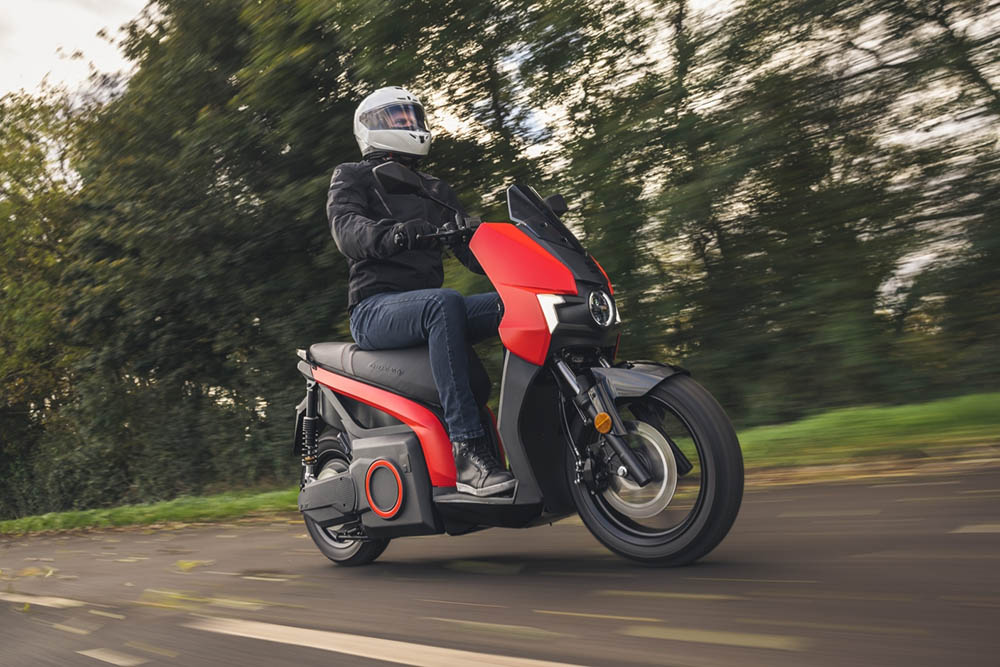
SEAT claims an 89 mile range in the city, which we weren’t able to replicate but which should be achievable in a completely urban environment, although on the open road you will be looking at more like half-a-mile for every percentage of battery used. Incidentally, most of my riding was done on warm autumn days, so I would expect a bit of a drop off in range if riding in colder temperatures.
Recharging the 5.6kWh battery is relatively easy, if you can park next to a socket at least. The SEAT plugs into a regular three-pin socket, using the kind of cable used for computer monitors. There’s a socket on the right hand side of the bike, and you can plug in there for a full recharge of between six to eight hours. If you can’t get the bike to a plug socket, the battery and attached 600w charger is removable. It’s a good feature and one which shows the bike has been designed with flat dwelling city residents in mind. It’s worth noting though, that the battery weighs around 40kg and although it is mounted on a little trolley to move it around, it is a bit of a faff and not exactly the sort of thing you could carry up stairs on a regular basis. If you have a lift, then it should be fine, but for stairs you’d be better with an electric scooter or motorcycle using two smaller batteries, like the arrangement used by NIU, Maeving and Super Soco
That said, while the SEAT/Silence system is elegant it’s also evidence as to why swappable batteries aren’t really a solution for anything other than low powered machines. Incidentally the battery comes with a four-year/25,000 mile warranty, while the scooter itself has a two-year, unlimited mileage guarantee on the other components.
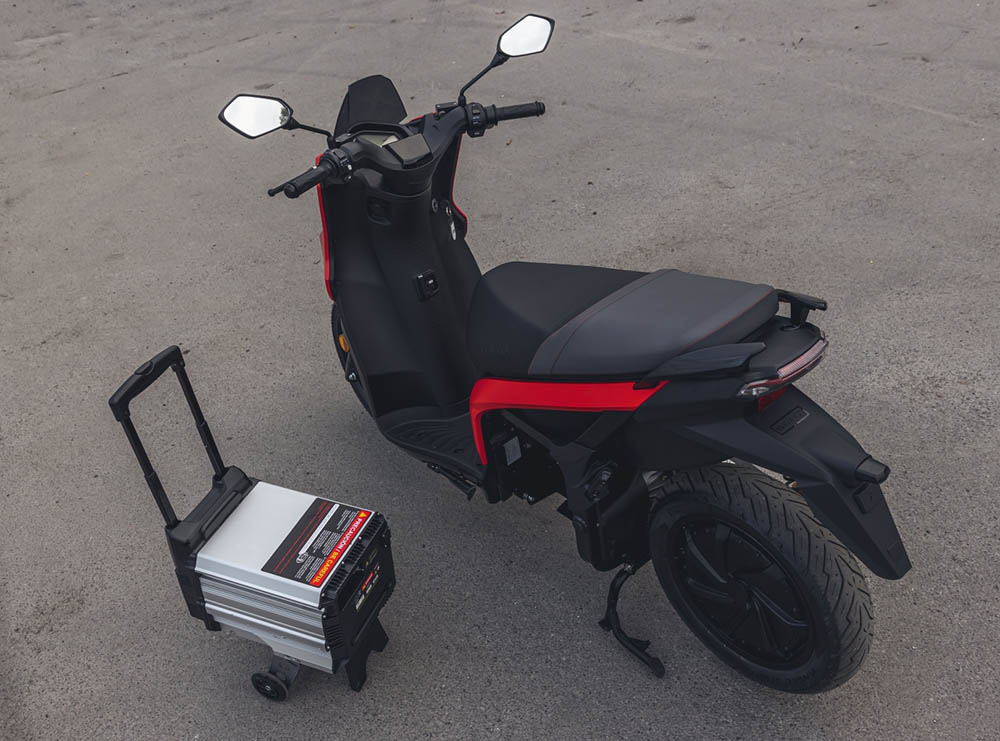
One complaint I’ve had about electric scooters and mopeds in the past is that the batteries take up the place used as storage on most petrol equivalents. Not so on the MÓ. The battery’s design and low placement means there’s a lot of storage space under the seat. It’s very impressive, you can get two full faced helmets under there. For me, it means I can carry a heavy security chain around with me, leave my helmet and gloves under the seat when parked up – and still have space to buy some groceries on the way home. There’s also a bag hook to allow for another bag to be hung between the rider’s legs, although one complaint I do have about the MÓ concerns the footboards. They really are very narrow and shallow. I’d have liked more space for my little feet, and even had them slip off the side on occasion. If I was taller, I’d definitely want to give it a proper try before committing to buy.
But, overall, the SEAT MÓ 125 is really very easy to ride. It only weighs 152kg with the battery in place and, as with pretty much every scooter on the market, it’s a simple twist and go style of transmission, meaning there’s no clutch or gears to contend with. A side benefit of electric is that they’ve been able to add a reverse function, which seems a bit gimmicky but which actually makes manoeuvres like turning in the road a bit easier. The brakes are handlebar mounted, with the usual set up of front brake on the right and rear on the left, although a gentle pull on the front brake activates the regenerative braking before activating the brake caliper. As mandated by law, they’re linked, so tugging one activates both. The brakes work well enough, but there’s no anti-lock system which is disappointing for a scooter costing the best part of £6000.
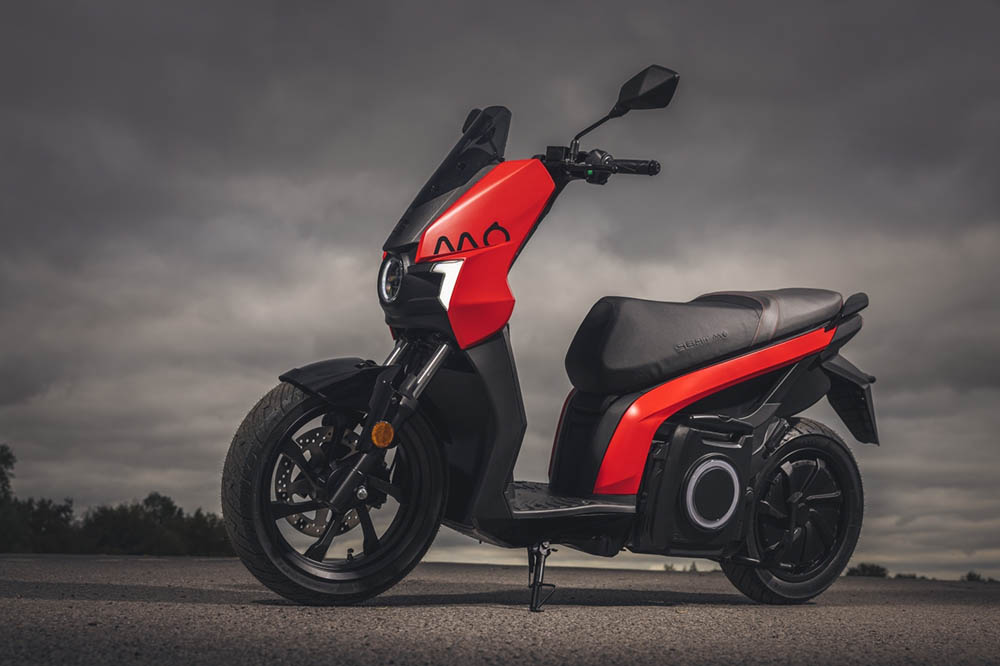
Indeed, if I have a complaint with the MÓ then it’s just that I was expecting something just that little bit more ‘premium’ from a scooter bearing the SEAT name. Things like plusher suspension, ABS, traction control, heated grips and more smartphone connectivity would all have made a more positive impression on me, although there is a pretty hefty options list, including top box, windscreen and riding gear to bump the price up some more. Also a bit budget is the sound made by the indicators. I’m not too sure I know what I want them to sound like, but it sure as heck isn’t the sound made by a reversing bin lorry!
And it’s going to be hard for the SEAT MÓ 125. It finds itself in a crowded marketplace, going up against an eclectic range of electrics including the aforementioned NIU, Maeving’s trendy RM1 and Super Soco’s CPX. None are as practical as the Spanish contender, but all are a good bit cheaper – and we’ve a feeling it won’t be long before the big guns of Honda and Yamaha pull out A1 licence scooters of their own.
Then there’s the petrol powered competition. The excellent PCX125 and NMAX are almost half the price and well proven entities, while the SEAT’s £5800 purchase price would still buy you a top-of-the-range Vespa or Honda Forza and some cash to spare.
But if the SEAT works for you, it works. It’s not the most soulful form of transport, but it’s easy-to-ride, practical and cheap to run. As a form of urban mobility, it certainly ticks the boxes, even if the purchase price feels a little salty.
SEAT MÓ 125 specification
Price: £5,800 (after grant)
Motor: Brushless electric motor
Power: 9kW (12.5bhp)
Torque: 240 Nm
Battery capacity: 5.6kWh
Wheels: 15” front / 14” rear
Tyres: Tubeless, front 120/70-15, rear 140/70 R14
Weight: 152kg
Seat height: 805mm
Range: 87 miles (claimed)
Contact: https://www.seat.co.uk/mo/seat-mo-125


